KHEN SHISH
☰
☰
x
- ← DEMONS
- Ktzia Alon, Dalia Markovich
- 2006
In the exhibition at the Art Gallery, University of Haifa, Khen Shish unfolds an uncanny, overwhelming typology of the powers of horror: all-devouring holes and black sun, spiders and cockroaches, womb and witchcraft – all entwining the collapse of the ability to symbolize and give meaning. Shish shatters the black chaos on thin white paper. Julia Kristeva marks the turn to the blank page as one means to define abjection: "Throughout a night without images yet buffeted by black sounds; amidst a throng of forsaken bodies beset with no longing but to last against all odds and for nothing; on a page where I plotted out the convolutions of those who, in transference, presented me with the gift of their void – I have spelled out abjection." (1) Abjection is an articulation of dirt, filth, contamination. The search for it is a type of obsession. In the attempt to put it into words and lend it meaning, it assumes explicit visual form as well. Shish formalizes it in the figure of dark, black images, duplicated, in a ritualistic motion, on the creases of the paper. Her artistic practice thus resembles a "ritualization of defilement." (2)
One source of inspiration for Shish is canonical artist, Francisco Goya. Like Goya’s famous painting, The Sleep of Reason Produces Monsters, Shish, too, releases reason in favor of the dark monsters dwelling in the subconscious. She has renounced the narrative frame generated by the sleeping youth. In her world the monsters acquire a dreamless reality. The monstrous, defiled, abject is a part of life. Goya’s series of black paintings, portraying distorted figures, cannibalism and madness, includes the work Kronos/Saturn Devouring One of His Children, namely time devouring the whole of mankind. The ruins of the passing time render the violence inherent in the historical process present. Similarly, Shish’s works do not provide songs of praise for everyday life. She chooses to signify only the sites of chaos and destruction. From what materials is the toxic nuclear dust which Shish exposes to the light made? The scale of impurity ranges from the most intimate and personal to the social, primordial and transcendental. The abject is the map of the invisible, map of the black soul, the Jungian “shadow” and dark forces inhabiting the subconscious. Kristeva called it the “Black Sun”: “Out of what eerie galaxy,” she asks, “do its invisible, lethargic rays reach me, pinning me down to the ground, to my bed, compelling me to silence, to renunciation?” (3) Shish’s works also seem to extend penetrating rays of sadness originating in a deep dark sun. The black sun shatters on the paper with seething melancholic lava. The image of the sun was generated by the delicate, minimalist flower characterizing Shish’s work. By enlarging the image to monstrous dimensions, the flower-turned-sun exposed the beastly, threatening facet planted in the morbid field. In the exhibition “La Vie en Rose” (Alon Segev Gallery, Tel Aviv, 2005), the flower field collapsed under an excess of pink sweetness. The saccharine veil drowned the minimal barren black flower in vivid pink. Such were also the black and pink hearts that flooded the frame in the exhibition “Birthday” (Hagar Art Gallery, Jaffa, 2003).
In other works, the morbid “eclipse of the sun” emerges in a threatening beastly guise: as spiders and cockroaches. Arachnids, reptiles and insects are perceived as the lowest life form, therefore the most abject. Their moist, sleek, parasitical presence, emerging from the gutters, invokes feelings of horror and queasiness. The wretched, filthy existence is dichotomous to order and cleanliness. Hence, its comparison to other human creatures is perceived as especially degrading and humiliating. Shish takes the viewer on a journey to “the territories of animal” (4), a voyage into the jungle of existence, into the heart of darkness. (5) She conducts this journey of liberation in unmapped areas, in sites of anxieties and fantasies. Shish’s journey inversely simulates the voyage taken by Kurtz, protagonist of Joseph Conrad’s heart of darkness. Conrad leads the reader into the black abyss, as interpreted by the white man: the European Kurtz penetrates Africa, losing his soul. Blackness emerges as a beastly jungle immersed in madness, as a phenomenon refusing to be categorized, as deviation, as perversion: “The abject is perverse because it neither gives up nor assumes a prohibition, a rule, or a law; but turns them aside, misleads, corrupts; uses them, takes advantage of them, the better to deny them.” (6)
Shish goes out into the heart of darkness, into a senseless jungle. The chaotic journey in her work resembles a tangled thicket groping for a foothold for its roots. The “root journeys” popular in Israel reduce memory to a specific time and place, and are usually conducted in defined geographical sites. Shish embarks on a symbolic journey that deviates from the prevalent touristy itinerary. Her journey does not take place in sites that underwent cultural processing and became encoded in Israeli memory as markers of exile or tradition. She takes a private journey into biographical, political and emotional realms. At times it seems as though the entire trip maps the sites of danger lurking in her way by means of “black flags” which she scatters along the way. In a work depicting a black figure drawn with mere contours, Shish quotes Diego Velázquez’s painting Las Meninas, depicting the Infanta Margarita and her companions: her ladies-in-waiting and the dwarf girl commissioned to entertain her. The mirror positioned behind the princess’s back reflects the figure of Velázquez who documented the event. It is an intricate piece with multiple implications, but Shish seems to have chosen to emphasize a different aspect altogether. Her work fuses the figure of the distorted dwarf girl with the figure of the princess and with her own figure as a painter. Shish’s “dwarf” appears like a marionette hanging by a thread. Invisible strings activate the solitary black figure whose hands are extended in a gesture of helplessness and sadness. The “dwarf’s” head is dropped and defeated, and her legs resemble a distorted pair of crutches. In subsequent works in the series the figure of the dwarf girl undergoes a set of transformations. She is eaten up by a devouring demon who transforms into a threatening pirate. Ultimately, he comes to resemble a deadly weapon and a black angel with a golden crown hovering above his head. In the final work the prince loses his mimetic hooks, transforming into an abstracted display reminiscent of the molecular structure of an atom. The atom has been fixed in modern culture as a sign of science and progress, and as a symbol of destruction and death. Shish thus generates an apocalyptic perspective – an Armageddon – represented by an upside-down atomic mushroom. The skeletal doe starring in another work appears like a survivor from this event. Her big eyes, pierced with black holes, look at the viewer and at an invisible horizon with an empty, torn gaze.This chaotic sequence contains both male and female elements: the breasts, womb, flower, dwarf and doe, blended with aggressive, phallic grid lines: the black rays and the threatening testicle-like mask. The hybrid composition generates a complex range of cross-breeds: man and demon, man and machine, man and flower. The various crosses confront the viewer with an intimidating anomaly that refuses to be categorized. Anomaly too, as noted by Kristeva, is a type of black abjection. Shish presents the black (Mizrahi, Arab) woman who is not represented in the white canon. From these materials she concocts high art which seems to have undergone sublimation and refinement that furnish it with the conditions of visibility at the University’s Art Gallery.
Shish disgorges herself anew in the figure of the black demons which she releases. Darkness thus functions also as a violent womb cutting the body in two: tearing life from it. In some respect it is the womb of black magic applied to Israeli art. Shish has explored materials pertaining to her Mizrahi (Eastern) identity throughout her artistic career. In the piece Rather Nice presented in the exhibition “Birthday,” she appeared as a black demon casting a renewed visual image in the figure of the “Black Panthers.” Alluding to a classical work by Goya, The Royal Family, from which she extracted the figure of the Spanish Queen, Maria Luisa, Shish gouged the queen’s eyes out, thus implying the symbolical gouging of Golda Meir’s eyes. Next to the work she wrote in wounded letters: “Rather nice,” paraphrasing Golda’s remark to the Black Panthers. In the current works the concrete political protest undergoes abstraction. The black struggle is aestheticized: from a concrete image it transforms into a black thicket. Israeli art has been said to use “bleach” or “whitening powder” to imitate the West (7); Shish, on the other hand, seems unafraid to invert the Western substance and subject it to local processing. Thus, for example, in a series of portraits featured in the exhibition, she plucks her own eyes out. Whereas in Eyes (Hagar Art Gallery, Jaffa, 2003), floating eyes were extended across elongated canvases, now the eyes are blocked and gelded, turning their gaze inward.
The dark images unfolding on the paper sheets concurrently embody both injury and threat. The dwarf girl is monstrous and helpless, the demon is domineering and devouring, and the deadly weapons resemble a wilted, drooping flower. The works thus present contradictory tension lines: abjection and aesthetics, impurity and beauty, political protest and personal depth psychology.
Julia Kristeva, Powers of Horror: An Essay on Abjection, trans. Leon S. Roudiez (New York: Columbia University Press, 1982), p. 207.
Julia Kristeva, Black Sun: Depression and Melancholia, trans. Leon S. Roudiez (New York: Columbia University Press, 1989), p. 3.
Joseph Conrad, Heart of Darkness (Harmondsworth: Penguin, 1995).
Sara Chinski, “Eyes Wide Shut: The Acquired Albino Syndrome of the Israeli Art Field,” Theory and Criticism 20 (Spring 2002): 57-87 [Hebrew].
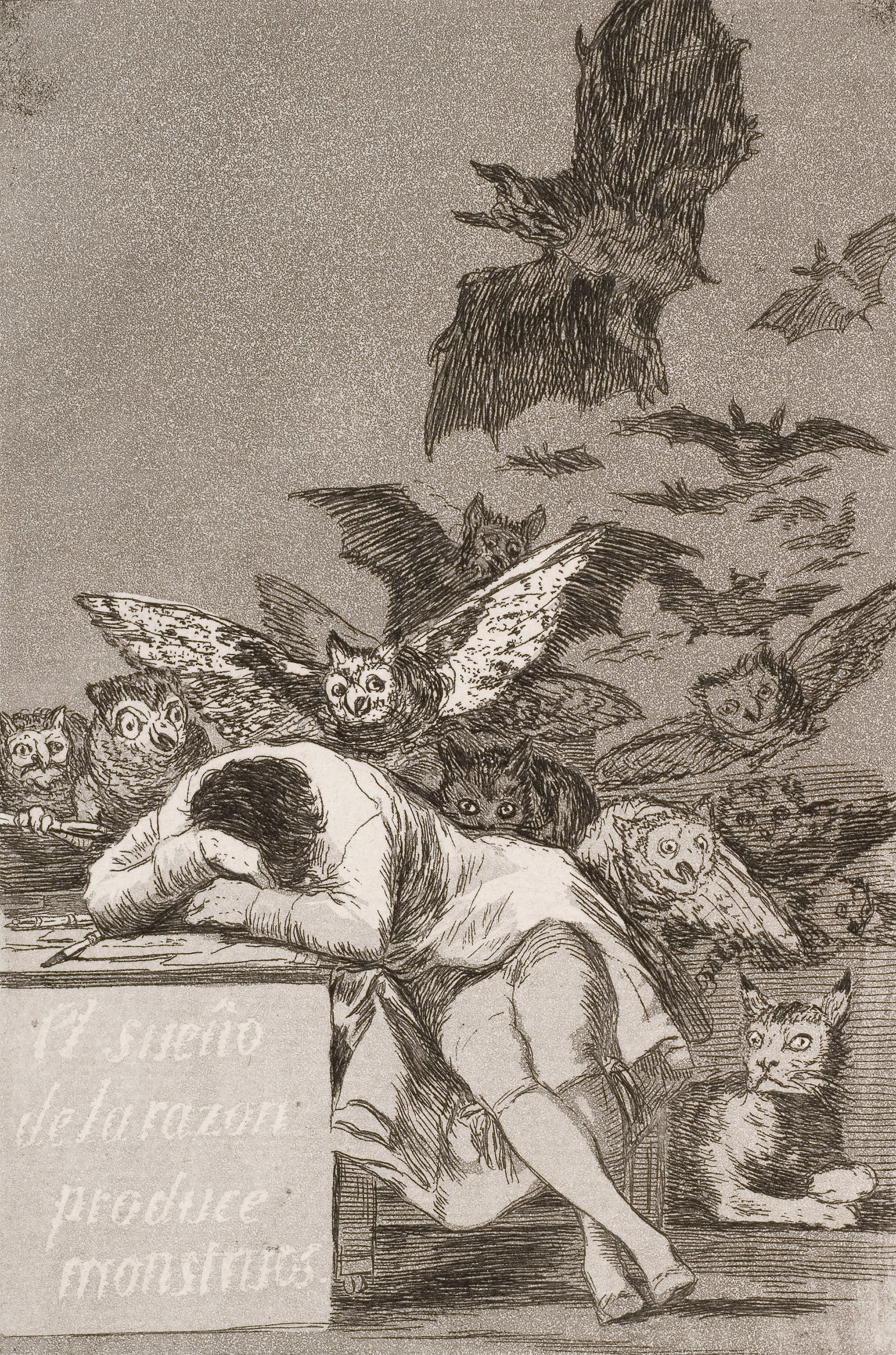
Francisco José de Goya, The sleep of reason produces monsters, 1797-1799
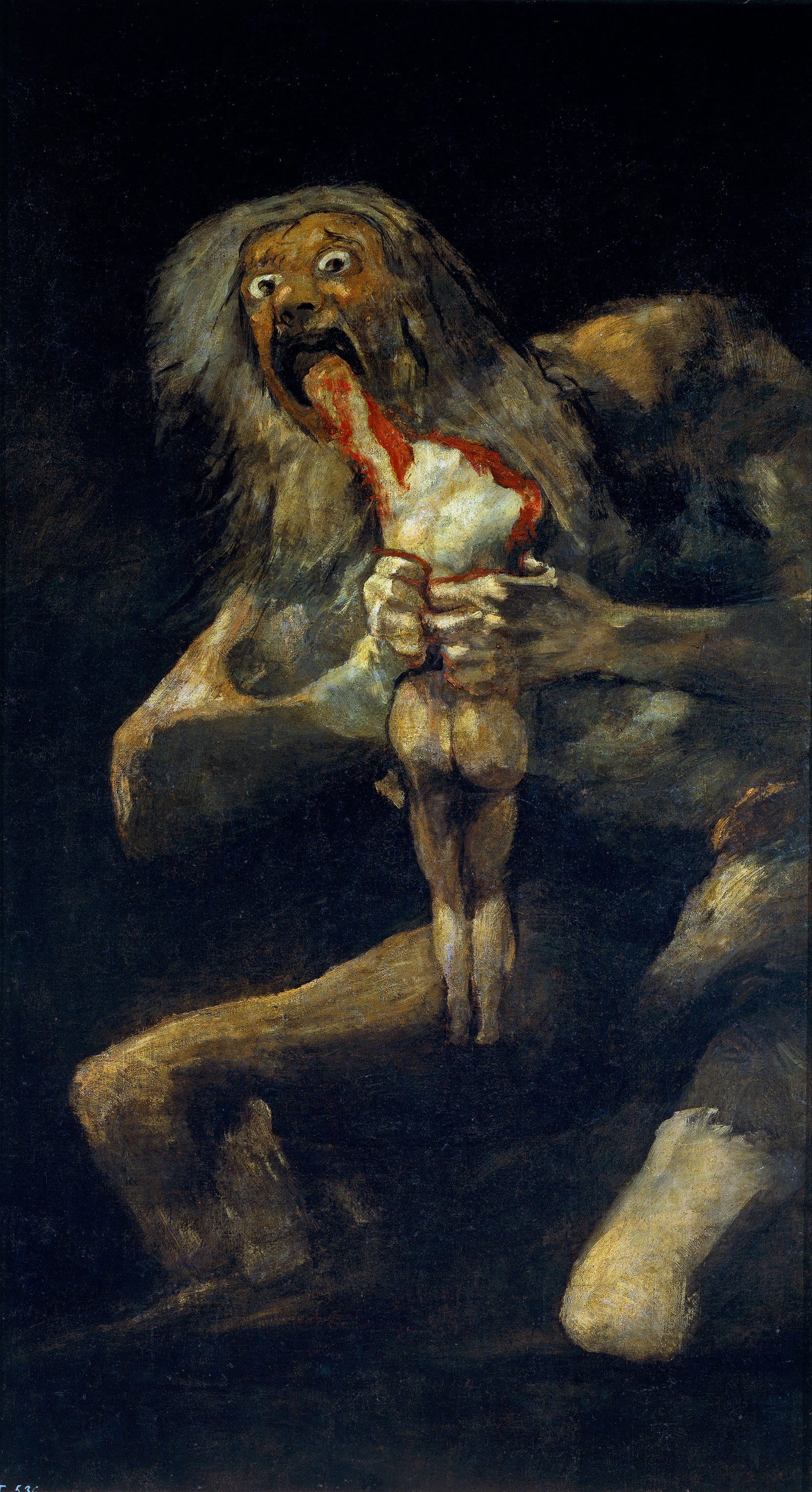
Francisco José de Goya, Saturno devorando, 1819-1823

The Big Pink 2, 2004, acrylic on canvas, 210x260
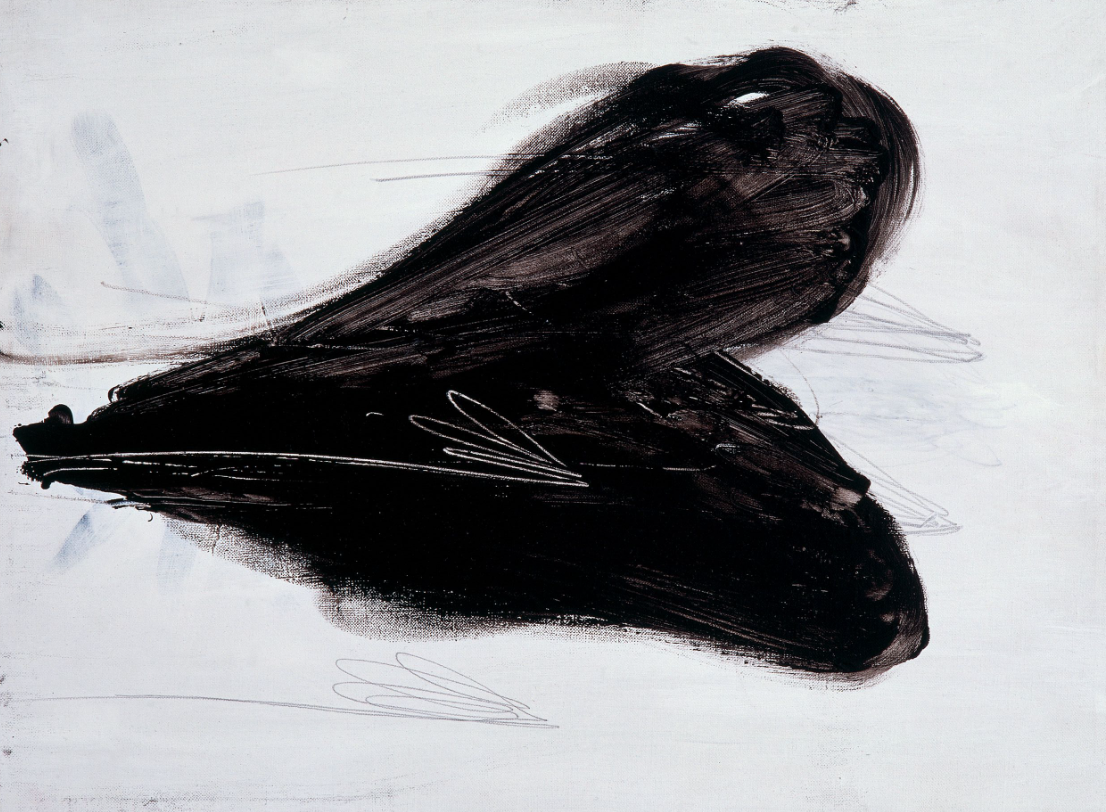
Reclining Heart, Acrylic and pencil on Canvas ,2003 40X30
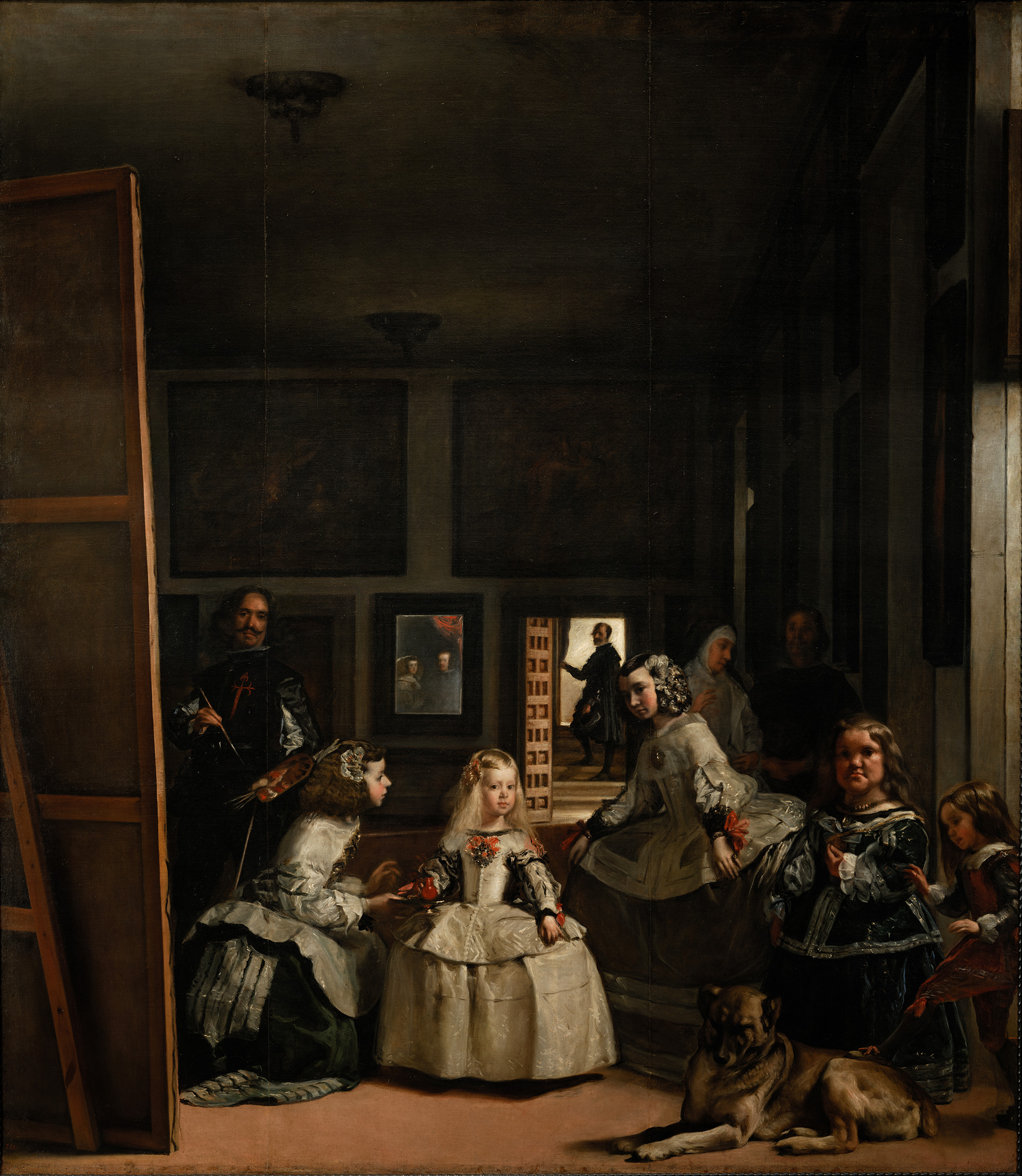
Diego Velázquez, Las Meninas, 1656
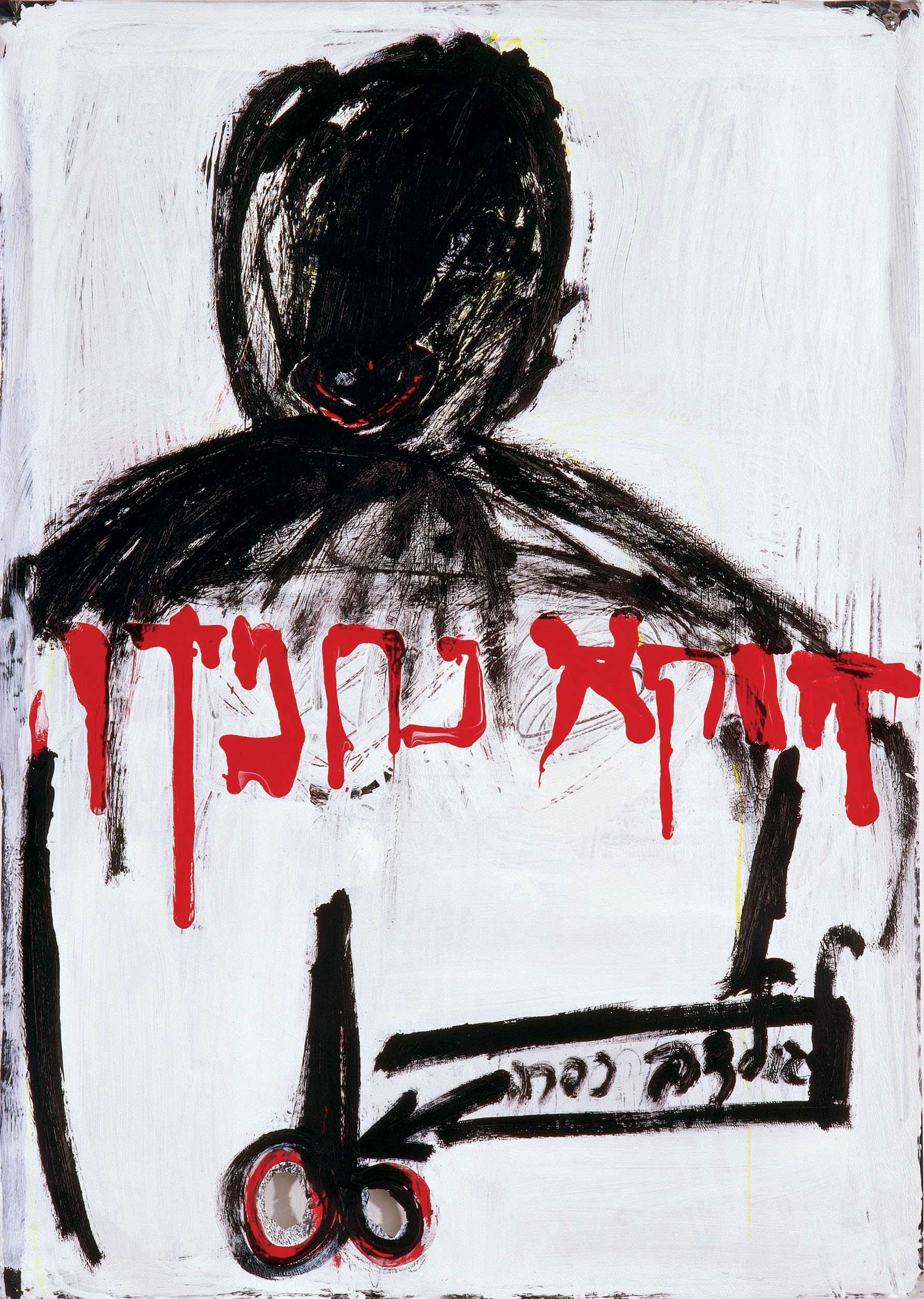
Rather Nice, 2003, acrylic on silver paper, 210x295

Francisco de Goya, The Royal Family, 1800-1801

Eyes-boats, 2003, Acrylic, black marker, gold masking-tape on canvas, 300X170